Pulp noir fiction is a medium and genre that is dark and cynical in tone and involves crime. The person investigating is not an official like a police officer or detective, which would make it hardboiled fiction. The hero of the story is a victim, a suspect, a perpetrator, or a vigilante. The system itself is always corrupt. The system attacks the hero always using corrupt methods to do so.
The hero is extraordinary, often with superhuman powers. The plots of the villain and the story are often convoluted. And the villains are extraordinary even when compared to the heroes.
It is with these that many people have objections. The Spider faces Judge Torture, the Brain, and the Bat Man (yes). The Shadow has Shiwan Khan, the Voodoo Master, and Hydra. People think these villains are over-the-top, their personalities and costumes are too colorful, their physical irregularities are unrealistic, they’re unbelievably lucky, and they have convoluted plans would have no chance of succeeding. Pulp stories are just unbelievable.
After all, who would believe in a villain with an outsized personality who can get away with robbing twenty-four banks, four different police stations (yes, he robbed police stations), get shot but survive because he somehow knew to put on a bulletproof vest that day, escapes imprisonment twice, and only gets caught due to the distinctive costume of his sidekick, whereupon he starts running but is shot several times in a crowd and no one in the crowd got shot. Who can believe that kind of plot?
Actually, that was a brief version of the career of real-life bank robber John Dillinger. At the time, his actions were played up by the press.
And he wasn’t the only one. Pulps were published in a different era, with different kinds of criminals than we know today. It was those criminals and their times which were the competition of the pulp heroes. People who read the pulps also read the papers and read about John Dillinger and other bank robbers who were played up by the press. The authorities might have seen him as a menace to society, large portions of Depression America saw him as a Robin Hood.
And don’t think bank robbers were the only source of mood for the times. There were are criminal masterminds who peopled the villain category of the pulps. Look at Al Capone, who isn’t far behind the likes of Fu Manchu. Of course, he wasn’t Asian, but he was still an ethnic. And if he didn’t use opium he did use alcohol as a basis for power.
And what about those weird groupings and cults? What about people like the Voodoo Master, whose plan usually included spreading the belief in Voodoo throughout America.
What about the conspiracy that started wars, exploited the poor, sought ever greater power, and had some kind of sonic-ray weapon that would vibrate people’s eyes right out of their skulls? Yeah, it took vigilantes to stop them.
Oh, wait, that evil conspiracy was described in Mankind United, the bible of a cult in California called the Church of the Golden Rule, among several other names. The cult itself was a pulp plot with the founder of that movement operating under various aliases, making exorbitant sums off his overworked followers, going to sleazy strip joints (ever see a classy strip joint?), drinking when all his followers had to be chaste and sober.
Simply put, the events of reality were a kind of model for the pulps. That doesn’t mean there was a one-to-one correspondence. But in a given society some ideas come up more often than others even if there is no connection between the people having the ideas.
The golden age of the pulps were the 1920s and 1930s. That is, the era of Prohibition and the Great Depression. This gives us the first rule of pulp stories: the government is useless. I suspect people who read the pulps generally did not trust the Government.
The government was not only incompetent, it was corrupt. During Prohibition, criminal masterminds ran rings around the government. If Al Capone hadn’t existed in real life, he would be too unbelievable to exist in fiction. He killed or ordered killed 33 known victims. He ran booze, prostitution, extortion, drugs, and a public business of used furniture. That furniture shop apparently earned $10,000,000 a year. Amazing.
Capone was famous for his custom suits, cigars, gourmet food and liquor, expensive and showy jewelry, and the company of attractive women. He outsmarted law enforcement agencies and they never put their very best man on the case because their best man was Al Capone’s brother. He changed his name to Richard Hart, if you were wondering.
I mean, if I’d said Richard Hart was a hardboiled detective in the 1920s and gave you his story, you’d probably say that was true. And you’d be right. Richard Hart may have been real, but everything a hardboiled detective tends to do he seems to have gone through as well. There was the cynicism of virtually all his brothers being criminals and one being really good at it. There was the violence of dealing with bootleggers, gunrunners, and the rest. There was the corruption, large and small, around him. But he did work in the west, as evidenced by his clothing, which was a kind of costume.
He was called Two Gun Hart, caught bootleggers left, right, and center until newspapers found out who his brother was. Hart and his family had to move but he made the best of it by protecting the President when Coolidge visited the area. He moved again and caught over 20 murderers in that new area.
As it was, another pulp-like detective finally took Capone down, Eliot Ness.
The twenties were the Prohibition era, but prohibition was not a solid rule. You could get alcohol in certain circumstances. Churches could have wine for communion and church attendance skyrocketed. Cough medicine had alcohol and some doctors did a roaring trade giving people a prescription for cough medicine and the address of another doctor who would give them another prescription. You had to work hard to be an honest alcoholic back then.
So lots of people bought booze at a bootlegger or speakeasy.
Booze was making some people very rich and other people dead. Very dead. That is, not only did they die, they were mutilated thanks to that new-fangled weapon, the personal machine gun. The Tommy gun was around and it could be carried by and used by a single person. Vast sums of money and new and more effective ways of violence naturally led to corruption of the system – not that that was ever clean.
Capone organized the St Valentine’s Day Massacre in which five members of the North Side Gang were killed. One gang member, Frank Gusenberg, was taken to the hospital. With over a dozen bullet wounds in him, the police asked who shot him. He said no one shot him.
This was the world in which pulps were written and the world the pulps had to be more exciting than if they were to sell. So let’s take another look at the kind of villain that in the era of the pulps would be “ripped from today’s headlines.” That’s right, I’m saying the pulps were plagiarizing reality.
The Barker-Karpis gang (its real name) was not the only recruiter. The problem with organized crime was always that it was organized. You might catch members of the syndicate, you might even put away the leader, but someone else would be recruited to take their place. It’s like bureaucracy: a bureaucrat quits and someone else sits at the desk.
So when Al Capone was put away, does anyone think that made Chicago honest?
And bank robbers were not universally despised, particularly among the lower classes who were target markets for the pulps. In many ways they filled the same role in public awareness that protestors and rioters fill today. People believed the bank robbers might kill the odd police officer, but the police officers were corrupt so that was no big loss. They robbed banks, yes, but banks were evil, anyways. And by robbing the banks, the famous bank robbers took the money and spread it among the people.
In the Prohibition era, the Government tried, ineptly and incompetently, to enforce the prohibition of a drug. Not that alcohol consumption didn’t go down, it went down by over half and stayed down for over ten years after Prohibition was lifted – World War II reintroduced a lot of people to drinking.
The glamour people in that age were the ones making a lot of money. Movie stars were small potatoes compared to the people who ran whole sections of major cities, sometimes whole cities through criminal enterprise. It was organized criminals who threw parties with pretty women who would later be available to the wealthy, the powerful, and the favored.
Prohibition came in at midnight, January 17, 1920. It would not be repealed until December 5, 1933. The Great Depression is usually said to have started with the stock-market crash on October 24, 1929. But the American economy had been in a depression since April of that year. Perhaps the stock-market crash is what it took to make the Great Depression truly great.
The effects of the Great Depression were well known to everybody at the time. Prices spiraled down, the unemployment rate was at some points 25%, people did not spend money, government set prices for things and people who charged less than that got beaten up, and people who slipped outside those limitations wound up living in shantytowns.
When people grouped together in their make-shift homes of cardboard, scrap wood, and tin, they were called Hoovervilles. Crime was rampant in Hoovervilles. Theft, assault, murder, and rape were all above the national average. The Hoovervilles were considered a disgrace, so police beat up the inhabitants, sometimes driving them out of town whereupon many men snuck onto railway cars and tried to find something in the next town, or the next, or one further down the line.
In the towns with permanent buildings, the working poor were left to their own racially segregated neighborhoods. They, too, were often victims. And sometimes they all longed for someone who would just punch out the bad guys who were hiding in plain sight right in front of everybody. Corruption and crime was the problem and vigilantes were the solution the readers wanted.
When 43,000 protestors gathered in the nation’s capital, the police opened fire. 17,000 veterans, their families, and sympathizers were marching for their promised veterans bonus. Two veterans died, but the careers of soldiers for the government breaking the protest, MacArthur and Patton, survived. The career of Hoover, who had supposedly been a friend of the American military, was mortally wounded, not to mention castrated, by the way he handled the protest.
So the peak era of the pulps coincided with twenty years of the federal government publicly and spectacularly unable to handle problems. We should be no more surprised that these events swirled into popular fiction than that spies should be Soviet, then Russian, then Middle Eastern in modern movies.
For that matter, what about the villain who is, shall we say, not standard in appearance? You know, the one who is short, looks younger than they are, and leads others in a crime spree of murder and robbery. In Batman: The Brave and the Bold, that’s Baby Face. But in real life it’s Baby Face Nelson. He actually was short and looked younger than his years and yet was the leader of his gang. Baby Face Nelson killed thirteen people that we know of including three FBI agents (still the record). He teamed up with John Dillinger in what is almost a comic-book crossover to escape prison. Oh, and in current dollar terms, he and his gang robbed banks for about $2.5 million.
Noir villains are sometimes females with outlandish names like Arizona Donnie Barker, better known as Ma Barker, whom J. Edgar Hoover called the most vicious, dangerous, and resourceful criminal brain in the last decade. Though to be fair, other people said she couldn’t organize breakfast and Hoover may have been covering up because she died in a shootout with the FBI and it wouldn’t do to shoot a stupid old woman. She died of one shot, while her son, Fred, was riddled with bullets.
And don’t forget, in noir they have dishonest cops. Just like how the Barker gang was protected by the police chief while they were in Minneapolis. The trail of police corruption at the time made its way into the fiction of the time. Think about corrupt elected officials and attitudes toward the 1% in movies now. Art is usually imitating life, if it wants to be successful.
Noir villains have outlandish favorite weapons and plans that threaten powerful people, like Shiwan Khan, who hypnotizes an arms manufacturer. Compare that to Machine Gun Kelly, who kidnapped industrialist Charles Urschel.
Take the Shadow’s enemy, Hydra. They are a criminal organization rather than the spy-conspiracy organization that Marvel now has.
The idea is every time you killed a leader of Hydra, two new leaders would replace them. Simple idea still in use. But those gangs of bank robbers did much the same thing. Police were shooting these people on a fairly regular basis and police brutality was a phrase that didn’t even exist, yet. They got some members of the Barker-Karpis gang, but the gang virtually replaced its losses overnight.
The Shadow faces the Prince of Evil, who loves to torture and mutilate people. In the same way, reality had the Torso Murderer, who killed people and took off their heads, arms, and legs to make it hard for police to identify the body. He was never caught.
And there was the Lipstick Murderer, who left a message in lipstick at the scene of one of his murders in which he said to stop him before he killed again, because he couldn’t help himself. For a while that expression was almost a staple of sappy crime dramas.
And then there was whoever killed Elizabeth Short, who was dubbed by a lying and corrupt media “the Black Dahlia.” But that was a now-defunct Hearst paper, so I can say that. By the way, reporters are constantly trying to nag Richard Wentworth into admitting he is the Spider.
The villains of crime noir and early comics came from a different era of villainy, both real and fictional. The people who deride the unbelievability of villains in noir, pulps, and comic books in favor of more elegant literary pursuits remind me of that old chestnut of the reasonable person. The law has a concept of what a reasonable person would do in a given situation. But that reasonable person will always believe and do whatever powerful people would want them to.
At law, once upon a time, a reasonable person would punch someone who spat on them. Now they would not. What changed? The opinion of the powerful as expressed through judges.
In the same way our world has changed and we get different villains because of it. Some of these occur because of new technology. Some are through a different focus in our society. The organized crime syndicate of Al Capone is largely replaced by the boardroom conspiracy, the crooked accountant, and their hybrid, the dishonest politician.
But there is another source of pulp villains which became unpopular in the fifties and is popular again: the conspiracy movement. Yes, Hydra as Marvel sees it, ODESSA as The ODESSA File sees it. The conspiracy leaders of the Voodoo Master, Shiwan Khan, Fu Manchu, and others. And so many of them want to overthrow American culture for a conqueror. Where do they come from?
Maybe the KKK. They had secret members, rituals for those members, they killed to enforce their power, and just to terrorize others. It was a political force, electing a number of people to positions such as members of local and state legislatures. A KKK member became mayor of Denver. He ran for office, but told the public he was not a member of the Klan and that he opposed them.
So Benjamin Stapleton became mayor on a coalition of Klan members and people who wanted to punch Klan members in the guts so hard they threw up on their own junk. It was a coalition that couldn’t last. Once he got into office, of course, Stapleton appointed Klan members into every position he could except one. That would be his undoing, because he didn’t put a Klan member in as police chief. His membership in the Klan was exposed, partly because several other Klan members were put in jail for corruption and they squealed when their own butts were on the line.
It was a plot that has been used in books, pulps, comics, and movies right up until now. Art that wants to be successful imitates life, just as the pulps did all those years ago.
D. Jason Cooper writes what he can, when he can. His “American Refugees” is in Black Chaos II, just out from Big Pulp and available on Amazon.

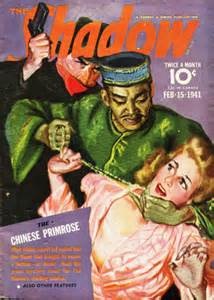
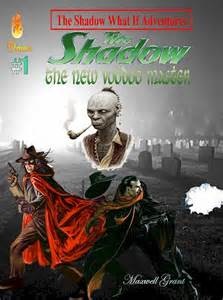
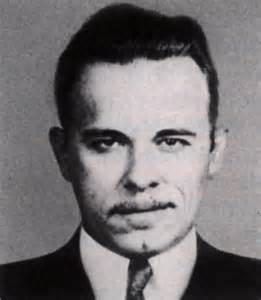
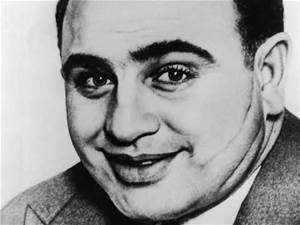
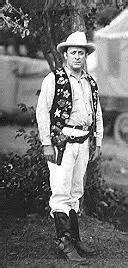
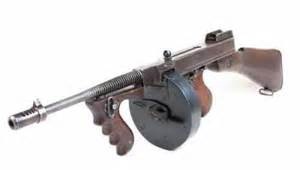
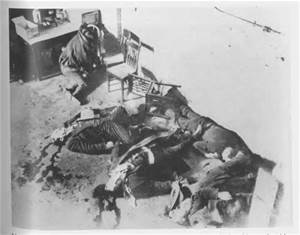
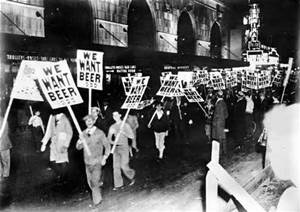
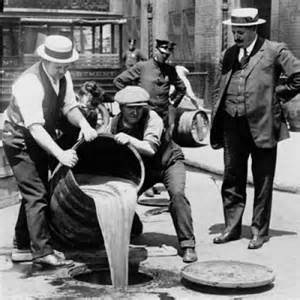
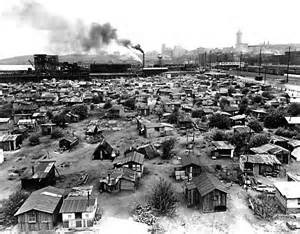

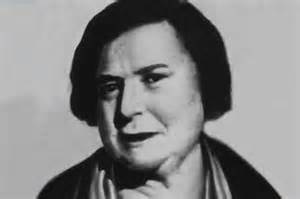
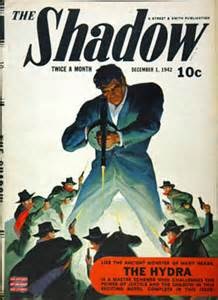
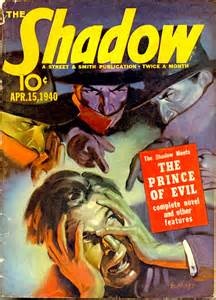
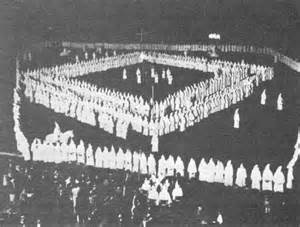
Comments are closed.